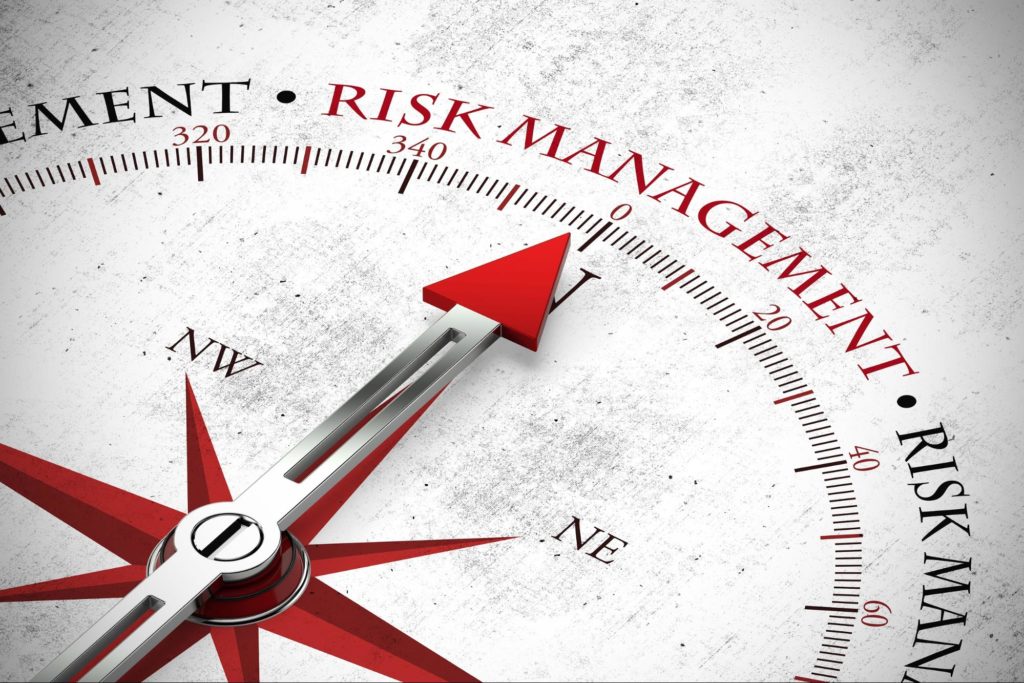
Every facet of your organization impacts your cost of risk. No matter the type of business, a total cost of risk (TCOR) management strategy is vital to ensure you’re protected when Murphy comes to town.
But with all the moving parts of managing a business, calculating your total cost of risk can prove difficult. For instance, the impact of negative publicity on your revenue is much more difficult to calculate than insurance premiums or lost productivity due to equipment downtime.
But both can cost your business time and money, and both should be accounted for in a TCOR.
What Is Risk Management?
Risk management includes evaluating things like insured risks, uninsured risks, employee wellness, and safety management. In the past, developing a cost of risk in risk management was something generally reserved for Fortune 1000 companies. Now, businesses and organizations across the board are finding it increasingly important to double down on knowing what puts their entity at risk.
In short, risk management helps a business know what’s important to them, what’s on the line if the worst-case scenario happens, and how to best develop processes to mitigate the risks that face their organization.
Why a Cost of Risk Management Strategy?
A total cost of risk management strategy includes assessing any risk that faces your business, whether seen or unseen. The point of it is to know what you should insure and what your premium should be. You have to know the dangers facing your business to know how to protect yourself against them.
Things like insurance premiums, retained losses in the form of deductibles and uninsured losses, administrative costs, and indirect costs of claims are all items that should be accounted for in a TCOR.
Other factors include but are not limited to:
- Fines
- Reputation damage
- Overtime
- Transaction costs
- Claims reporting and investigation
- Additional training
More Than Meets the Eye
To further explain the benefit of a cost of risk management strategy, let’s look at the following example.
90 percent of an iceberg is underwater — a true natural phenomenon of “more than meets the eye.” We often like to make this comparison when it comes to thinking about risk management insurance. Above the waterline are the costs you budget for — things like insurance and deductibles. Below the waterline are all the things not budgeted for — increased overtime, employee dissatisfaction, claims costs, loss productivity, training & hiring, clerical time, legal fees, etc.
It wasn’t the things above the water line that sank the Titanic, it was the part of the iceberg below the waterline. The sentiment rings true for a lot of businesses. Ultimately, every unbudgeted cost below the line comes directly out of a company’s net operating profit.
This is why we focus on dealing with all the risks you face on a daily basis, not just the one’s covered by an insurance policy.
How Total Cost of Risk is Measured
Typically, you’ll want to calculate your TCOR by measuring it against $1,000 of your annual recurring revenue. By doing so, you can better measure your risk management program’s effectiveness and even reduce internal costs over time by figuring out what premiums you’re paying too much for.
By gaining a more informed understanding of inconsistencies in your business’s approach to risk management, you can better prepare for the future, increase productivity and efficiency, and reduce costs across your entire organization, not just on insurance premiums.
Identification of Exposures
When drafting up a cost of risk management strategy, the first thing you want to do is identify your areas of risk by splitting your risk analysis up into two categories: qualitative and quantitative.

Qualitative Risk
Qualitative risk analysis refers to those things that can impact your business but aren’t necessarily tangible. They operate in the “big picture” space and are a bit more generalized. One way to assess qualitative risks is by thinking about what keeps you up at night.
Keep it simple, and start thinking about anything that could have a negative financial impact on your business that isn’t the standard workers’ compensation or auto insurance for a company vehicle.
Quantitative Risk
Quantitative risk analysis relies more heavily on data and is a bit more objective. By diving into verifiable data, you can take a more scientific approach. In other words, it allows you to assign a numerical value to extant risk. For instance, Risk A has a 25% chance of occurring, while Risk B has a 70% chance.
While completely dependent on the quality of your data, it can allow you to take the big picture risks from your qualitative analysis and think a bit more concretely about which ones to prioritize.
It’s also a good way to reveal high-risk areas you may not have been aware of and maybe even cause you to rethink areas in your business or organization you thought were high risk but aren’t.
Risk Treatment
After you’ve made a list of all of your potential qualitative and quantitative risks, you want to focus on splitting them into categories that are easier to think through and handle. An industry favorite is the Accept, Transfer, Mitigate, Exploit, and Avoid model. This step-by-step process helps you determine the risks you can work to avoid, those you can’t, and those you should ensure are insured!
Accept
Is the risk low-impact and low probability? Is the cost of preventing it simply too high? If so, it’s probably best to just accept it and move on. Don’t stress too much about the things you can’t control, and focus your energy on the parts of your business you can control.
Mitigate
Some risks have a high probability of occurring and are something you really shouldn’t ignore. Remember that chaos comes to the places where responsibility is abdicated. With this in mind, you should choose to add this to your risk management strategy and put procedures in place that mitigate said risks.
Exploit
There are some risks you can actually exploit to the benefit of your business. Having the ability to identify exploitable risks can prove extremely helpful in the long run. When doing so, it’s important to partner with a risk management expert to know what risks and challenges you can turn into opportunities.
Transfer
Risks with high financial impact and high probability are best transferred to a third party. Finding an insurance company that focuses on risk management is crucial, and it’s in your best interest to partner with a company you can transfer the risk to. You’ll save yourself headaches and money in the long run.
Avoid
If the risk is simply too high and expensive to accept, we recommend avoiding it altogether. How? You can avoid risks by changing your business processes (if possible) and working to structure your procedures accordingly.
In the case of the above example, maybe you can focus more intently on reinforcing the importance of safe driving in inclement weather, or even encourage drivers to pursue further credentials and licenses that will improve their driving skills. While these processes would be in addition to coverage like commercial auto insurance, these types of preventative measures can help you avoid certain potential risks altogether.
Implementing Control Measures
Pre- and post-loss control measures are strategies you can implement to help manage and reduce commercial insurance expenses. Around 75% of commercial insurance expenses are claims-driven, which means this is one area you don’t want to overlook.
Risk Assessment and the Pareto Principle
If you begin to feel overwhelmed during the creation of your TCOR, it’s helpful to remember the Pareto Principle.
Popularly known as the 80/20 rule, the Pareto principle is formulated around the idea that 80% of the results come from 20% of the work. This is relevant as it pertains to risk management, as identifying the most critical 20% of risks will mitigate 80% of the damage.
With this in mind, the high risk and high probability areas of your business or organization absolutely must be covered. From there, prioritization is key. This is another reason why partnering with a team of professionals to create a well-formulated TCOR strategy is important.

Managing Exposures
Approximately 25% of businesses that suffer a major setback are no longer in business within a year and over 90% close within two years of being struck by a disaster. These unfortunate realities can occur even if a business is properly covered with insurance. The reason for this is that many business owners fail to recognize, plan, and address the risks that cannot be covered by an insurance policy through comprehensive risk management strategies.
While you don’t want to overpay for coverage you don’t need, you do want to make sure you’re receiving the proper coverage to protect you from both high- and low-probability risks. A proper TCOR is always tailored to your business or organization’s unique needs and risk probability.
What Gets Measured Gets Managed
A one-size-fits-all approach is harmful when it comes to developing cost of risk management strategies. Developing a TCOR analysis is about creating a comprehensive strategy that ensures every risk facet of your business or organization is insured and tailored to your unique needs and coverages.
After completing a cost of risk management strategy, you may find areas where losses are low and annual premiums are high. You may also find a few areas of your business where you need to step up your coverage due to a variety of circumstances, both internal and external.
To partner with a group dedicated to learning the unique needs of your business, reach out to us. We’d love to schedule a time to help you manage and mitigate future risks.
This blog was originally published on July 2, 2020. It was updated on April 29, 2021.